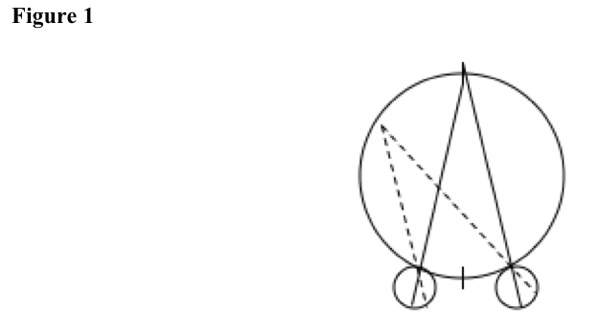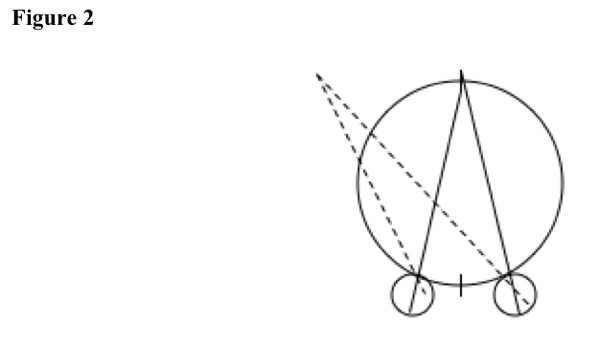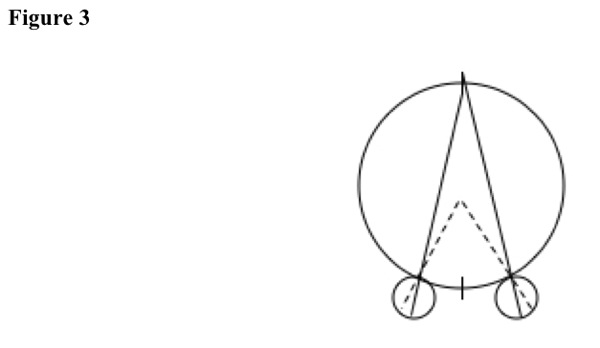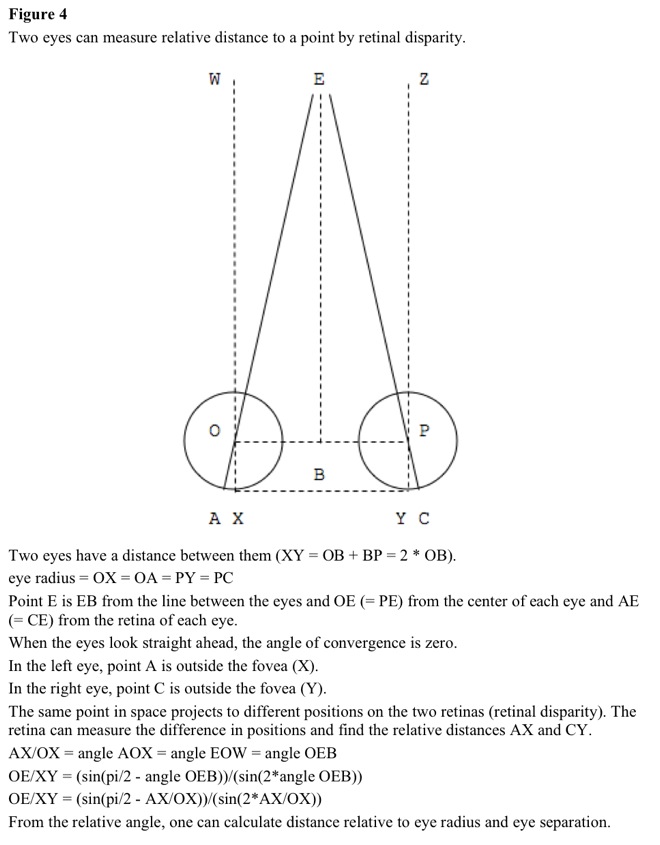



Right and left retinas see different images {retinal disparity} {binocular disparity}| [Dacey et al., 2003] [DeVries and Baylor, 1997] [Kaplan, 1991] [Leventhal, 1991] [MacNeil and Masland, 1998] [Masland, 2001] [Polyak, 1941] [Ramón y Cajal, 1991] [Rodieck et al., 1985] [Rodieck, 1998] [Zrenner, 1983].
correlation
Brain can correlate retinal images to pair scene retinal points and then find distances and angles.
fixation
Assume eye fixates on a point straight-ahead. Light ray from scene point forms horizontal azimuthal angle and vertical elevation angle with straight-ahead direction. With no eye convergence, eye azimuthal and elevation angles from scene point differ {absolute disparity}. Different scene points have different absolute disparities {relative disparity}.
When both eyes fixate on same scene point, eye convergence places scene point on both eye foveas at corresponding retinal points, azimuthal and elevation angles are the same, and absolute disparity is zero. See Figure 1. After scene-point fixation, azimuth and elevation angles differ for all other scene points. Brain uses scene-point absolute-disparity differences to find relative disparities to estimate relative depth.
horopter
Points from horopter land on both retinas with same azimuthal and elevation angles and same absolute disparities. These scene points have no relative disparity and so have single vision. Points not close to horopter have different absolute disparities, have relative disparity, and so have double vision. See Figure 2.
location
With eye fixation on far point between eyes and with eye convergence, if scene point is straight-ahead, between eyes, and nearer than fixation distance, point lands outside fovea, for both eyes. See Figure 3. For object closer than fixation plane, focal point is after retina {crossed disparity}.
With eye fixation on close point between eyes and eye convergence, if scene point is straight-ahead, between eyes, and farther than fixation distance, point lands inside fovea, for both eyes. For object farther than fixation plane, focal point is before retina {uncrossed disparity}.
Two eyes can measure relative distance to point by retinal disparity. See Figure 4.
motion
Retinal disparity and motion change are equivalent perceptual problems, so finding distance from retinal disparity and finding lengths and shape from motion changes use similar techniques.




Consciousness>Consciousness>Sense>Vision>Physiology>Focusing
1-Consciousness-Sense-Vision-Physiology-Focusing
Outline of Knowledge Database Home Page
Description of Outline of Knowledge Database
Date Modified: 2022.0224